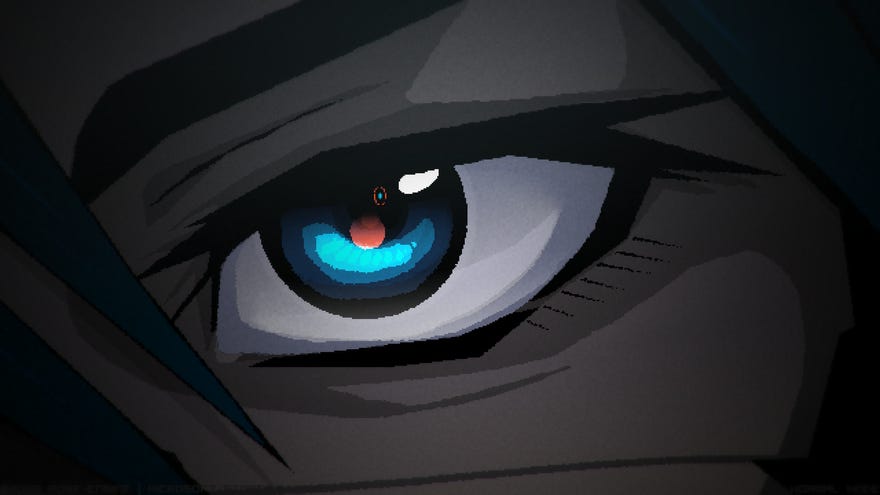The next wave of indie horror games takes cues from classic survival horror
The developers tell us why - and what classic survival horror is
What kind of game does the label “survival horror” denote? Since its inconspicuous first appearance in the original Resident Evil’s loading screen (functioning first and foremost, lest we forget, as a handy marketing catchphrase), the term has been so enthusiastically embraced and haphazardly applied as to be rendered almost meaningless in 2023. Horror gaming has witnessed multiple seismic shifts since 1996, most notably the turn to action-oriented design with the likes of The Suffering and Resident Evil 4 in the mid-2000s, as well as the rise of spooky almost-walking-simulators like SOMA in the mid-2010s.
Yet the term survival horror has expanded to such a degree that it now seems to stand in, albeit rather awkwardly, for the entirety of video game horror. Even with the caveat that borders for these kinds of labels are notoriously hard to define, survival horror remains an unusually amorphous realm, one that (as a quick search of the relevant tag on Steam will reveal) lays claim as much to first-person bloodbaths like Zombie Army Trilogy as it does moody, combat-free adventures like Visage. Still, old distinctions linger, and a clutch of recent indie survival horrors qualify their work with the word “classic”. I interviewed some of the developers to find out why - and, more importantly, what classic survival horror means.
In recent months, across storefront blurbs and social-media posts, indie developers are increasingly using the term with an explanatory note: the original announcement for Nathan Hamley’s Hollowbody talks about an “homage to classic survival horror”; according to its Steam page, Jordan Mochi’s Conscript is “a new take on classic survival horror”; and the website for Vincent Adinolfi’s Heartworm describes it as a “love letter to [its] late-90s genre progenitors”. Dozens of similar in-development titles advertise themselves as “retro”, “old-school” or “90s-inspired”. The exact phrasing may change but there’s an undeniable urge to hark back to that shared lineage, the cluster of early masterpieces that first defined the subgenre.

But what are the design pillars on which “classic” survival horror stands? The core elements that typify its earliest examples as much as this latest wave of indies inspired by them? A theme brought up by every developer I talked to for this piece was visual organisation, though Hamley (who has a background in cinematography and video production) is quick to point out that the discussion is more nuanced than the requisite mentions of third-person perspective and fixed cameras tend to suggest. “People tend to associate the genre with its surface level traits [but] fixed camera angles were only really present in Resident Evil 1 through to 3”, he argues, before listing several counterexamples using dynamic cameras: Dino Crisis, Code Veronica, Silent Hill.
“It's not the fixed pre-rendered angles that made it work”, he adds, “it's the intention of the camera direction itself, and how that relates to the characters on screen and the worlds they inhabit. Players have very little input into how the camera is framed, the game shows you only what it wants to show you”. Besides, as Adinolfi astutely observes, “most games with free perspectives still frame the player's point of view in other ways”.
The prevailing choice for a classic survival horror indie game remains, overwhelmingly, the third-person perspective, whether framed through the dynamic 3D camera of Hollowbody, Conscript’s scrolling top-down view, or Holstin’s isometric dioramas. And even the more exotic efforts like You Will Die Here Tonight, whose overhead angle rapidly shifts to a claustrophobic first-person during combat, all observe the cardinal rule about the game remaining in control of what you’re allowed to see, adding a degree of uncertainty-fuelled tension to the experience.

Which is also the rationale behind the subgenre’s second core tenet: forcing you to think twice before engaging in combat. Whereas the more action-oriented titles of the mid-2000s favoured a scuffle, and the more sedate games that reversed that trend a decade later avoided them altogether, classic survival horror offers a deliberately uneasy balance; you may engage but it’s rarely clear whether doing so is to your advantage. A whole range of well-known design conventions engender this trepidation, from finite healing items and ammo (introduced as early as Capcom’s 1989 genre forerunner Sweet Home), to clunky controls.
Implementing this design philosophy in Conscript was, according to Mochi, quite a challenge. The game is set in a labyrinth of WWI trenches where “bullets are flying and combat is expected to be fast-paced… the antithesis of the slow-moving and primitive Spencer Mansion zombie”. He addressed the issue by modelling the combat after Resident Evil 4 “where enemies come in groups and try to swarm and overwhelm the player”, but still taking care to deincentivise combat by making sure that enemies “generally do not drop resources [and] if they do, it’s usually so minimal it’s not worth taking the risk”.
Heartworm’s heroine, Sam, is not equipped with an assault rifle but with a single-lens reflex camera which (in an obvious nod to arguably the scariest survival-horror series of them all, Fatal Frame) can magically harm her enemies – humanoid figures seemingly made from glitchy tv static. Adinolfi has designed combat with a similar mindset which dictates that “the player has limited resources to work with [and] is likely underpowered compared to the challenges they face”, making sure that his protagonist “isn’t a superhero, so there’s an element of realism in her abilities and her constitution”.

But seeing how popular these old-school conventions are becoming among horror indie developers raises an obvious question. What has prompted this re-evaluation of a subgenre that had mutated almost beyond recognition in the last couple of decades?
Perhaps the person best positioned to offer an opinion is a member of the team partly responsible for reigniting interest in the subgenre. Yuri Stern is the co-creator of Signalis, which received numerous accolades upon release last October and proved that classic survival horror can still entice a younger generation of players. “It might be something similar to the so-called ‘30-year cycle’. A lot of people who grew up playing survival horror in the early 2000s have now reached the age where they finally release the games that inspired them in their youth,” they surmise, adding that it's facilitated by “advances in game development technology which allow us to make more sophisticated indie games”.
Mochi echoes the sentiment, strengthened by what he perceived as a gap in the market. “Fans had to wait through some dark years before the AAA industry realized there was money to be made,” he says. “I’m mainly referring to the period from around 2007 - 2017, where Resident Evil went off the rails, Dead Space went from horror to action and Silent Hill was, well, dead.”
Hamley, who describes Stern’s game as “an absolutely perfect example of what made this genre so exciting to begin with”, wonders, nevertheless, if the process wasn’t quite so sudden. “People have been quietly making these sorts of games for years but there's definitely more of a focus on the genre currently. I think with AAA once again trying to make horror work on bigger budgets and Resident Evil back selling like hotcakes there is more public awareness of the horror genre in general.”

And what about growth? Survival horror is a subgenre that crystallised more than two decades ago, but it's clear there are still new directions to be pursued - though the focus seems to be more on exploring new themes and moods than subverting long-established mechanical conventions. Adinolfi, for example, has been “actively trying to avoid using gore and disgust for shock value”. As a result, the sense of creeping dread in the half-hour or so I spent with the demo for Heartworm reminded me more of survival horror’s great forerunner Alone In The Dark than any of the usual Konami and Capcom suspects.
Similarly, Mochi makes a bold choice to discard any fantastical elements and situate his game in the gloom of humanity’s most senseless conflict, the First World War. “With Conscript I’m trying to prove that the survival-horror framework can still function even in a non-fiction historical setting,” he says. “History is full of so many horrific events that are arguably more disturbing than any fictional monster or supernatural story.” Brutal and oppressive, the first few minutes of the demo, seem to indicate that he will succeed and that, with these and dozens of other in-development games, the indie scene can help classic survival horror thrive despite limited resources. Much like its protagonists.






